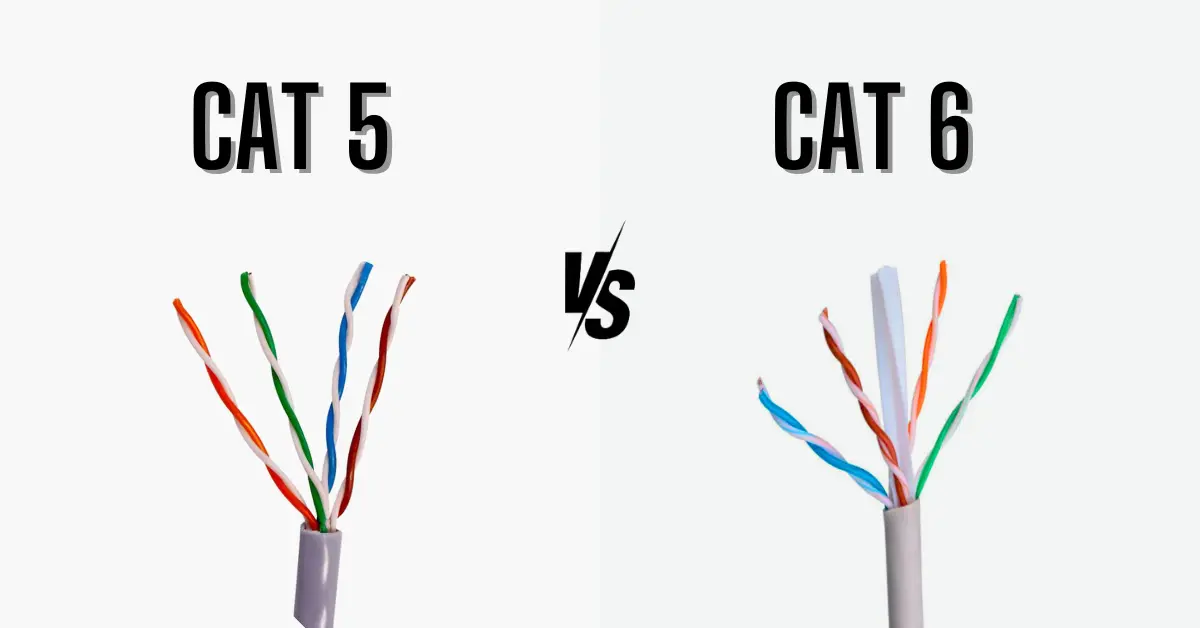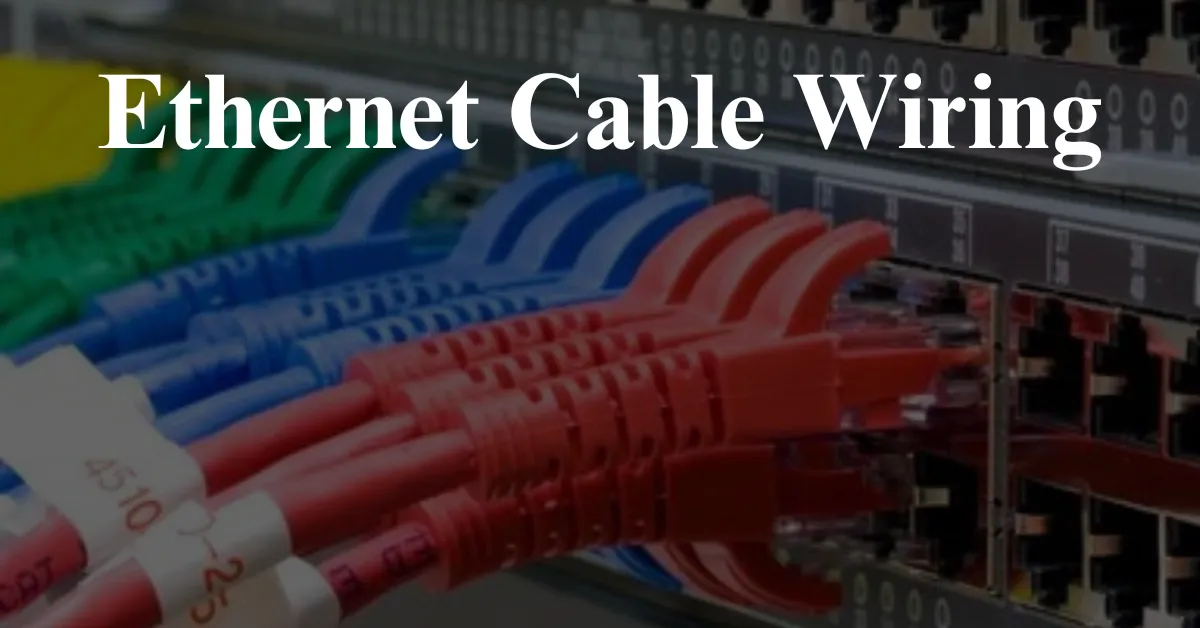Low Voltage Wiring | Types of Cables, Connectors, and Installation Guide (2025)
Modern homes and businesses rely on technology, but behind every smart device, security system, or internet connection lies low voltage wiring. Many struggle to understand what it is, how it differs from regular wiring, and why it matters. Choosing the wrong wiring can lead to poor performance, safety risks, or unnecessary costs.
Low voltage wiring is efficient, safe, and essential for networking, automation, and security. Whether installing Wi-Fi, smart lighting, or surveillance cameras, knowing the right wiring makes all the difference. This guide covers its uses, installation, and best practices to help you make informed choices.
What is Low Voltage Wiring?

Low voltage wiring is used for systems that require 50 volts or less. It is commonly found in networking, telecommunications, security, and automation systems. Unlike high-voltage wiring, which powers large appliances and lighting fixtures, low-voltage electrical wiring is primarily used for transmitting signals and powering smaller electronic devices.
Low Voltage Wiring vs High-Voltage Wiring
The main difference between low and high voltage wiring is the amount of electrical power they carry. High-voltage wiring, typically 120V or 240V, is used for powering household appliances and industrial equipment.
It requires thick insulation and follows strict safety regulations. In contrast, Low voltage electrical wiring is safer, easier to install, and primarily used for data transmission, security systems, and communication networks.
Some low-voltage wiring conductors are made from magnetic metals, enhancing performance in specific electrical systems.
Common Applications of Low Voltage Electrical Wiring
Low voltage electrical wiring is used in various industries and residential setups, including:
- Networking and Telecommunications – Internet connections, Wi-Fi networks, and telephone systems.
- Security Systems – CCTV cameras, motion sensors, and access control systems.
- Building Automation – cable lighting, thermostats, and home automation systems.
- Audio-Visual Systems – Home theaters, intercoms, and paging systems.
Understanding Low Voltage Cables
Types of Low Voltage Cables
Different types of cables are used for low voltage applications, each designed for specific needs.
Cat-5, Cat-5e, and Cat-6 Cables
These Ethernet cables are used for networking, internet connections, and telephone systems. While Cat-5e supports speeds up to 1 Gbps, Cat-6 offers better performance with speeds up to 10 Gbps.
Coaxial Cables
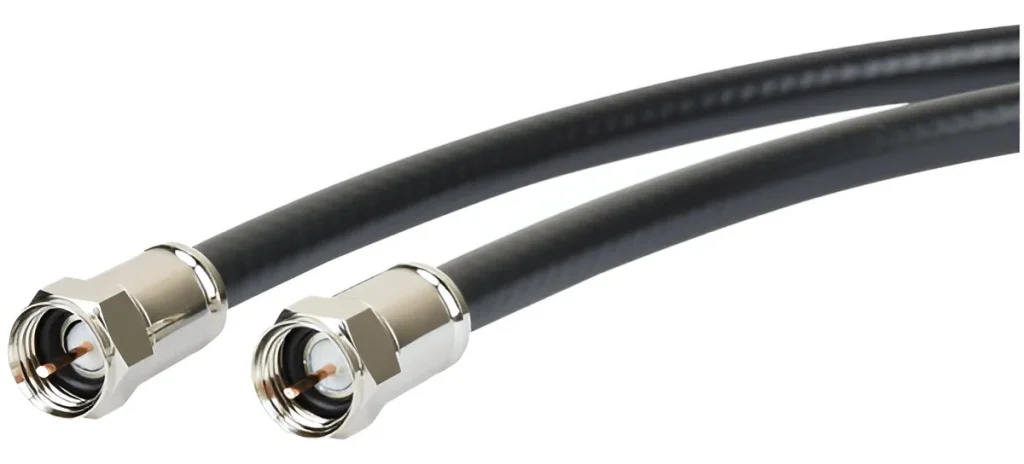
Coaxial cables are used for cable television, internet services, and security camera installations. They provide strong shielding against interference, making them ideal for long-distance signal transmission.
Speaker Wires
Speaker wires carry audio signals from amplifiers to speakers. The thickness of the wire determines the quality and range of the sound transmission.
C-Wire Cables
Commonly used in smart thermostats, C-wire cables provide a continuous flow of power to low voltage devices, ensuring reliable operation.
Fiber Optic Cables (Are They Considered Low Voltage?)
Fiber optic cables use light instead of electricity to transmit data, allowing for high-speed internet and long-distance communication. While they don’t carry electrical voltage, they are categorized under Low power wiring because they transmit signals rather than power.
Understanding the fiber optics color code is crucial for proper installation and maintenance, ensuring correct identification of fibers in multi-strand cables.
Shielded vs. Unshielded Cables
Shielded cables have extra insulation to prevent electromagnetic interference, making them ideal for industrial and high-interference environments. Unshielded cables are more flexible and easier to install but may be susceptible to interference.
Uses of Low voltage electrical wiring
Telecommunication & Networking
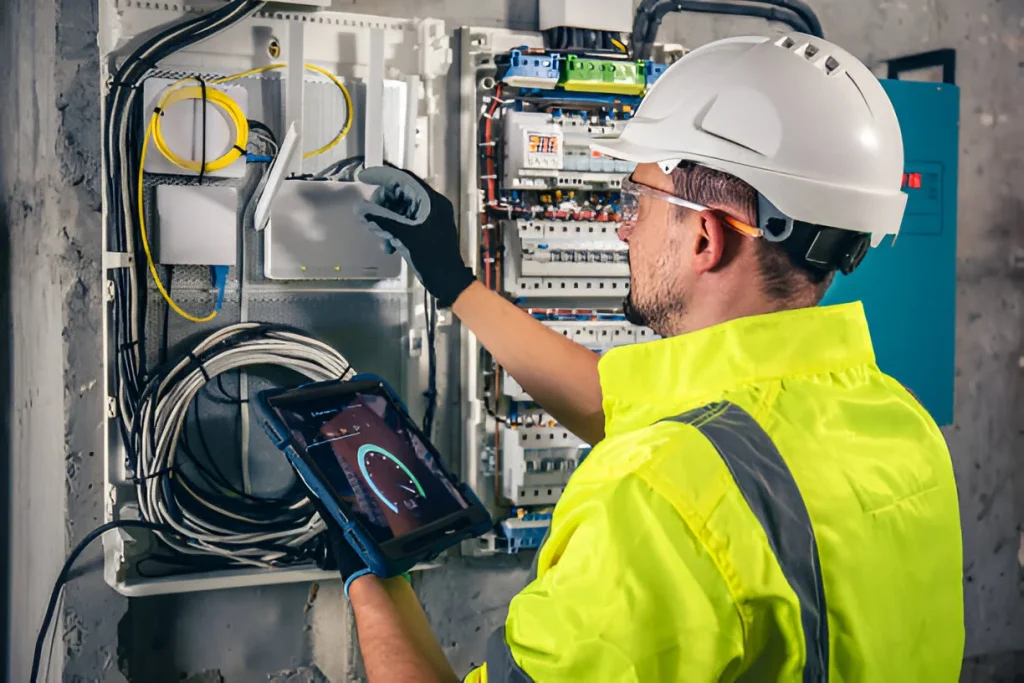
Low-voltage electrical wiring is the backbone of modern communication systems.
- Telephone Systems – Landline and VoIP systems use Low power wiring to transmit voice signals.
- Internet & Wi-Fi Networks – Ethernet cables connect routers, computers, and other networking devices.
Building Automation & Smart Systems
- Lighting Controls – Automated lighting systems use low-power wiring for remote control and energy efficiency.
- Thermostats – Smart thermostats rely on low-power wiring to communicate with HVAC systems.
- Garage Door Openers – Many garage door systems operate on low-power wiring for remote access.
When running cables in a new build, planning around the block foundation is crucial for seamless installation.
Security & Surveillance
- Security Cameras & Motion Sensors – low-voltage electrical wiring connects surveillance cameras and motion detectors to security systems.
- Access Control Systems – Keycard readers and biometric scanners use low voltage cabling for secure entry.
- Fire & Carbon Monoxide Alarms – These safety devices depend on low-voltage electrical wiring for reliable operation.
Audio-Visual & Entertainment
- Home Theater & Speaker Systems – Speaker wires connect sound systems for high-quality audio output.
- Paging & Intercom Systems – Businesses use low voltage electrical wiring for intercoms and communication networks.
Low Voltage Wiring Connectors
Low voltage wiring connectors are essential components used to securely join electrical wires in systems operating at 50V or less. These connectors ensure safe and efficient electrical connections in applications like security systems, landscape lighting, and home automation. Available in various types, such as push-in, twist-on, and crimp connectors, they provide reliable conductivity while preventing loose or exposed wiring that could lead to performance issues or safety hazards.
Choosing the right low voltage connector depends on factors like wire gauge, material compatibility, and environmental conditions. Waterproof connectors are ideal for outdoor installations, while lever-lock connectors offer ease of use for frequent modifications. Properly selecting and installing these connectors enhances system efficiency, reduces maintenance needs, and ensures long-term safety in electrical setups.
Installation Considerations
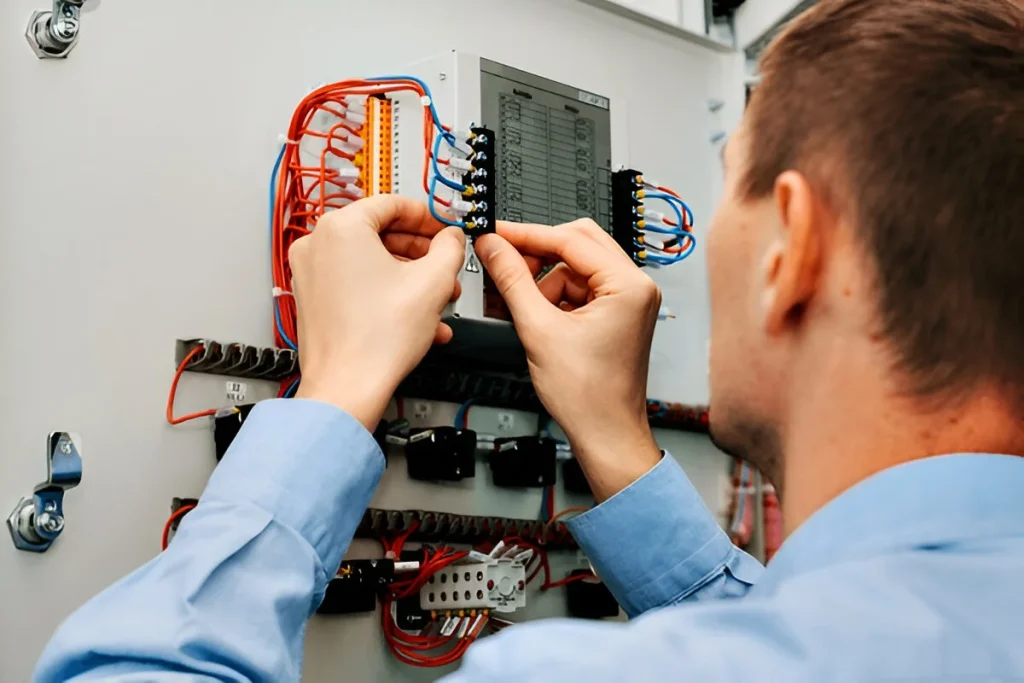
How to Identify Low voltage electrical wiring
Low voltage cables are thinner than high voltage wires and are often labeled with their voltage rating. They are commonly bundled in structured cabling systems.
Safety Considerations for Low Voltage Electrical Wiring
While low-voltage electrical wiring poses a lower risk than high voltage systems, proper installation is essential. Key safety considerations include:
- Keeping low voltage and high voltage wires separate to avoid interference.
- Using appropriate shielding to prevent signal loss.
- Ensuring compliance with local electrical codes.
Do Low Voltage Cables Need to Be Run in Conduit?
In some cases, running low voltage cables in conduit is required for protection against physical damage and interference. However, in residential settings, conduit is often not necessary.
Structured Cabling: What It Is & Why It Matters
Structured cabling is an organized approach to wiring management that ensures efficient and scalable network installations. It simplifies maintenance and allows for easy upgrades.
DIY vs. Professional Installation: What’s Best?
While some low voltage projects can be done as DIY installations, hiring a professional ensures compliance with regulations and best practices. Professionals also reduce the risk of signal interference and installation errors.
When running low voltage wiring, some installers use daisy chaining to connect multiple devices in sequence. While this approach can save wiring costs, it may lead to voltage drops and performance issues in certain applications
Key Tools and Accessories for low-voltage electrical wiring
| Tool/Accessory | Purpose |
| Wire nuts | Securely connects multiple wires together. |
| Wire strippers | Used to remove insulation from electrical wires. |
| Wire tester | Ensures proper connections and troubleshoots faults. |
| Wire tracer | Helps identify wires in walls. |
| Junction box | Provides a safe enclosure for wire connections. |
| Staples | Used to neatly secure cables along surfaces. |
| New construction box | Ideal for housing electrical components in new builds. |
| Cable jointing procedure | Ensures secure and durable wire connections. |
| Wire hangers & wire mold | Helps organize wires in walls. |
| Wire locator | Used to trace hidden wires. |
| Central vacuum diagram | Useful in commercial buildings for structured installations. |
Low Voltage Wiring vs. Regular Wiring
What is Regular (High Voltage) Wiring?
Regular wiring carries higher voltages (120V or more) and is used for powering household appliances and lighting systems.
When selecting the right wiring type, it’s essential to compare low-voltage electrical wiring and regular (high voltage) wiring based on safety, efficiency, installation, and application. Below is a side-by-side comparison to help understand their differences.
|
Factor |
Low Voltage Wiring (<50V) |
Regular Wiring (120V or more) |
|
Power Capacity |
Limited to small devices like security cameras, smart lighting, and networking. |
Supports high-energy appliances like refrigerators, ovens, and HVAC systems. |
|
Safety |
Lower risk of electric shock and fire hazards. |
High voltage poses significant safety risks, requiring strict regulations. |
|
Energy Efficiency |
Consumes less power, reducing energy bills over time. |
Uses more power, leading to higher energy costs. |
|
Installation Complexity |
Easier to install, often does not require conduits or thick insulation. |
Requires proper grounding, thick insulation, and professional installation. |
|
Heat Generation |
Produces less heat, reducing wear on devices. |
Generates more heat, which can reduce the lifespan of appliances. |
|
Cost of Installation |
Generally cheaper to install due to lower material and labor costs. |
More expensive due to the need for safety compliance and professional handling. |
|
Maintenance |
Requires minimal maintenance. |
Regular inspections needed for safety compliance and performance. |
|
Applications |
Used for telecom, security systems, smart home automation, and LED lighting. |
Essential for power outlets, industrial machinery, and household appliances. |
Which One Should You Choose?
- If your goal is to power high-energy appliances, regular wiring is the only option.
- If you need energy efficiency, safety, and modern smart home integration, low-voltage electrical wiring is ideal.
- Many homes and businesses use both types together—high voltage for appliances and low voltage for automation and communication systems.
Industry Standards & Best Practices
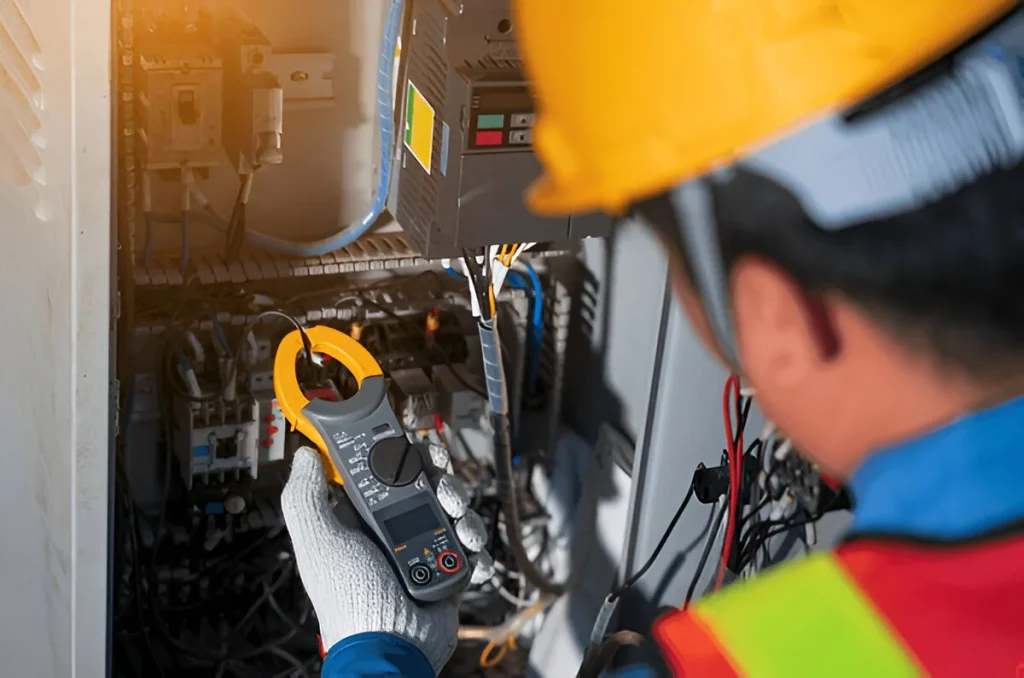
Power-Over-Ethernet (PoE): Is It Still Considered Low Voltage?
PoE allows Ethernet cables to transmit both data and power, eliminating the need for separate power lines. Since it operates under 50V, it is considered a form of low-voltage wiring.
How Much Voltage Can a 12-Gauge Wire Handle?
A 12-gauge wire can typically handle up to 20 amps at 120V in high voltage applications. However, in low-voltage electrical wiring, it is used for applications like speaker systems and LED lighting.
Key Regulations & Standards for Low Voltage Cabling
- National Electrical Code (NEC) – Defines safety standards for low voltage installations.
- TIA/EIA Standards – Establish guidelines for structured cabling.
- Local Building Codes – Requirements vary by region and must be followed for compliance.
Whether setting up a home network, security system, or automation technology, understanding low-voltage electrical wiring is essential. Selecting the right cables and installation methods will ensure a reliable and future-proof setup.
2025 Trends and Updates in Low Voltage Wiring
Low voltage wiring continues to evolve rapidly in 2025, reshaping how residential and commercial electrical systems are designed, installed, and maintained.
Whether you are planning a house beginner basic electrical outlet diagram for a DIY project or managing a full-scale installation company, staying updated with these trends ensures safe, efficient, and future-ready systems.
1. Smarter Cabling and Faster Connectivity
The demand for high-speed, reliable networks has led to a significant shift in cabling. Traditional Cat5e wires are now considered outdated, while Cat6A cable types are becoming the standard for residential systems and commercial setups.
They not only support 10 Gbps electrical systems but also handle low-voltage conductors for devices like cameras, speakers, and smart lighting. In larger projects, fiber optic technology is being installed more frequently, offering unmatched speed and bandwidth for future-proof networks.
2. Safer and Sustainable Wiring Solutions
Safety and sustainability are taking center stage in low-voltage construction. Many installation companies now prefer halogen-free, flame-retardant conductors, which reduce smoke and toxic emissions during electrical fires.
When creating or reviewing an electrical diagram or lighting diagram, designers are incorporating safer circuit colors and phase colors to make connecting wires simpler and more standardized across different systems.
3. Smart Homes and Integrated Systems
Today’s residential wiring goes beyond the basics. From home offices to smart lighting, cameras, and automation devices, low-voltage electrical systems are now an essential part of modern living.
If you’ve ever asked “what is wire used for in home automation?” or “what are systems in a structured wiring setup?”, the answer lies in connecting wires to form centralized hubs that distribute data, power, and control signals efficiently. Residential systems typically use structured cabling for flexibility, ensuring future upgrades can be made without major rewiring.
4. Regulatory and Licensing Shifts
Another key trend in 2025 is changes to low-voltage licensing rules. Some regions now require installation companies to employ licensed electricians for even basic low-voltage conductors work.
This impacts everything from speed wire terminations are primarily used on commercial grade devices to testing and labeling each circuit. Knowing how to test wire safely and documenting every step of your plan—including updated switch diagrams or high diagram layouts—has never been more important for compliance.
5. Training and Technology Integration
Understanding the basics of electrical 101, from how to connect wires to advanced systems examples, is essential for technicians in 2025. Interactive charts, digital diagrams, and smart-testing tools now help both beginners and professionals plan their design and verify every installation.
Whether it’s learning what is considered a low-voltage system or which devices work best with different cable types, ongoing education and updated technology are shaping the next generation of wiring solutions.
FAQ’s
Can I use regular wire for low voltage?
It’s possible, but not recommended. Regular wire is designed for 120V+ systems, while low voltage electrical wiring is optimized for lower power needs.
Can electricians do low voltage electrical wiring?
Some can, but low voltage work is usually handled by specialized technicians for networking, security, and smart home systems.
Can you use 14/2 wire for low voltage lighting?
Yes, but it's best for short runs. For longer distances or higher wattage, 12/2 is a better choice to prevent dimming.




